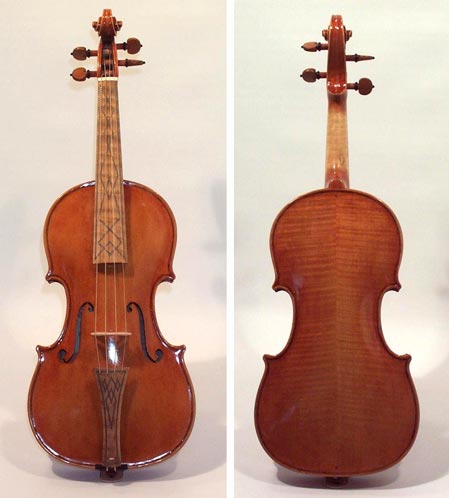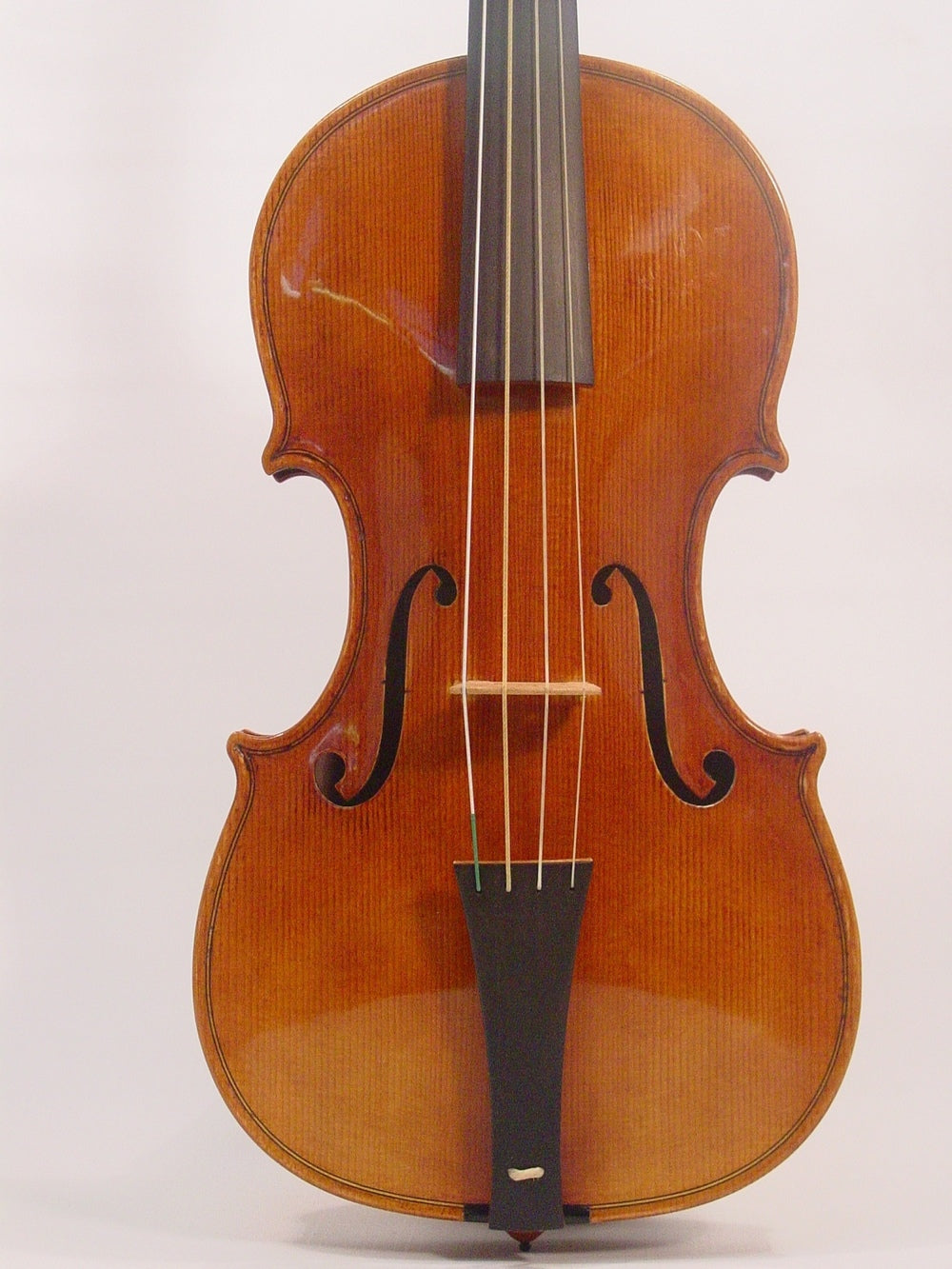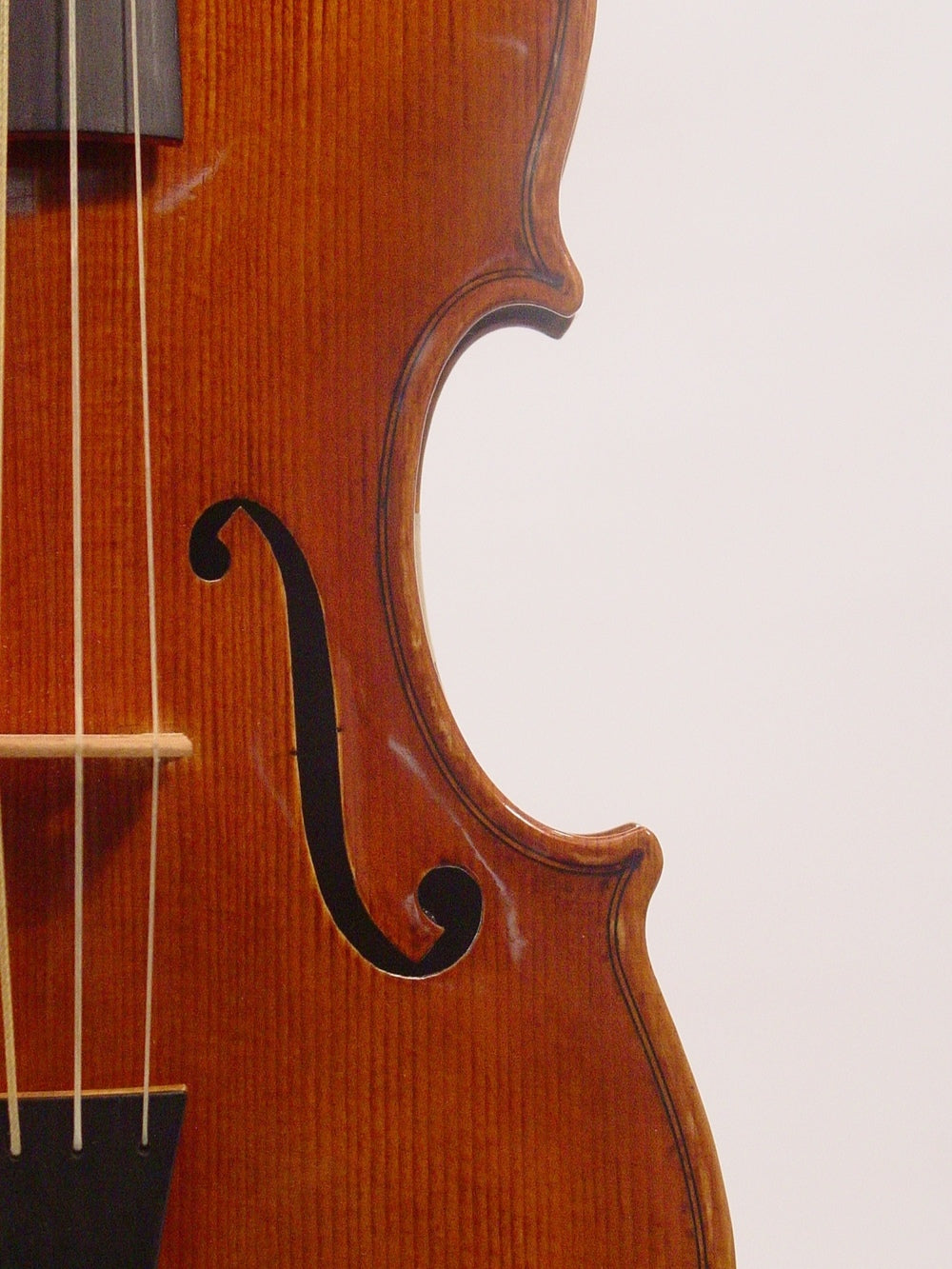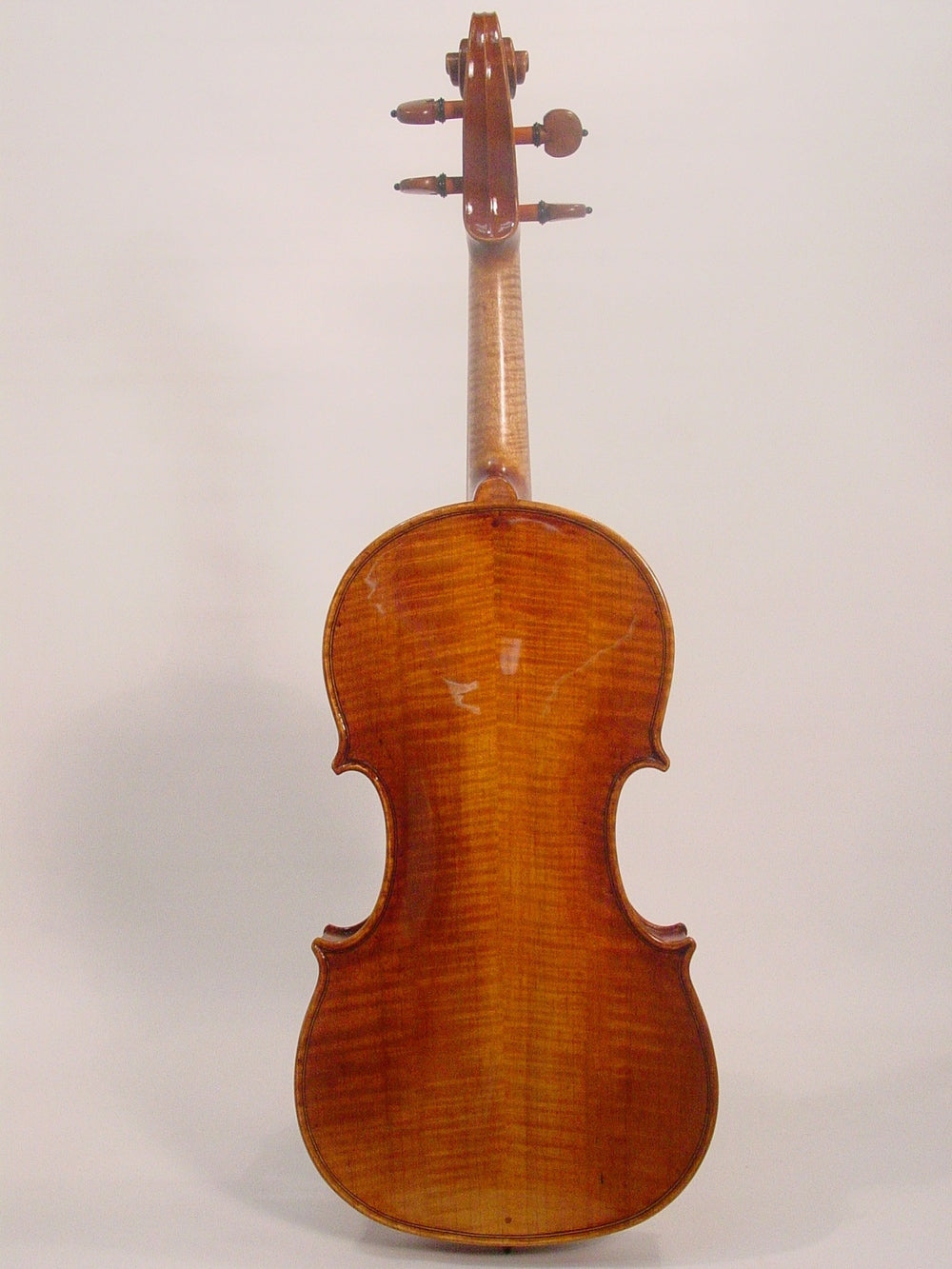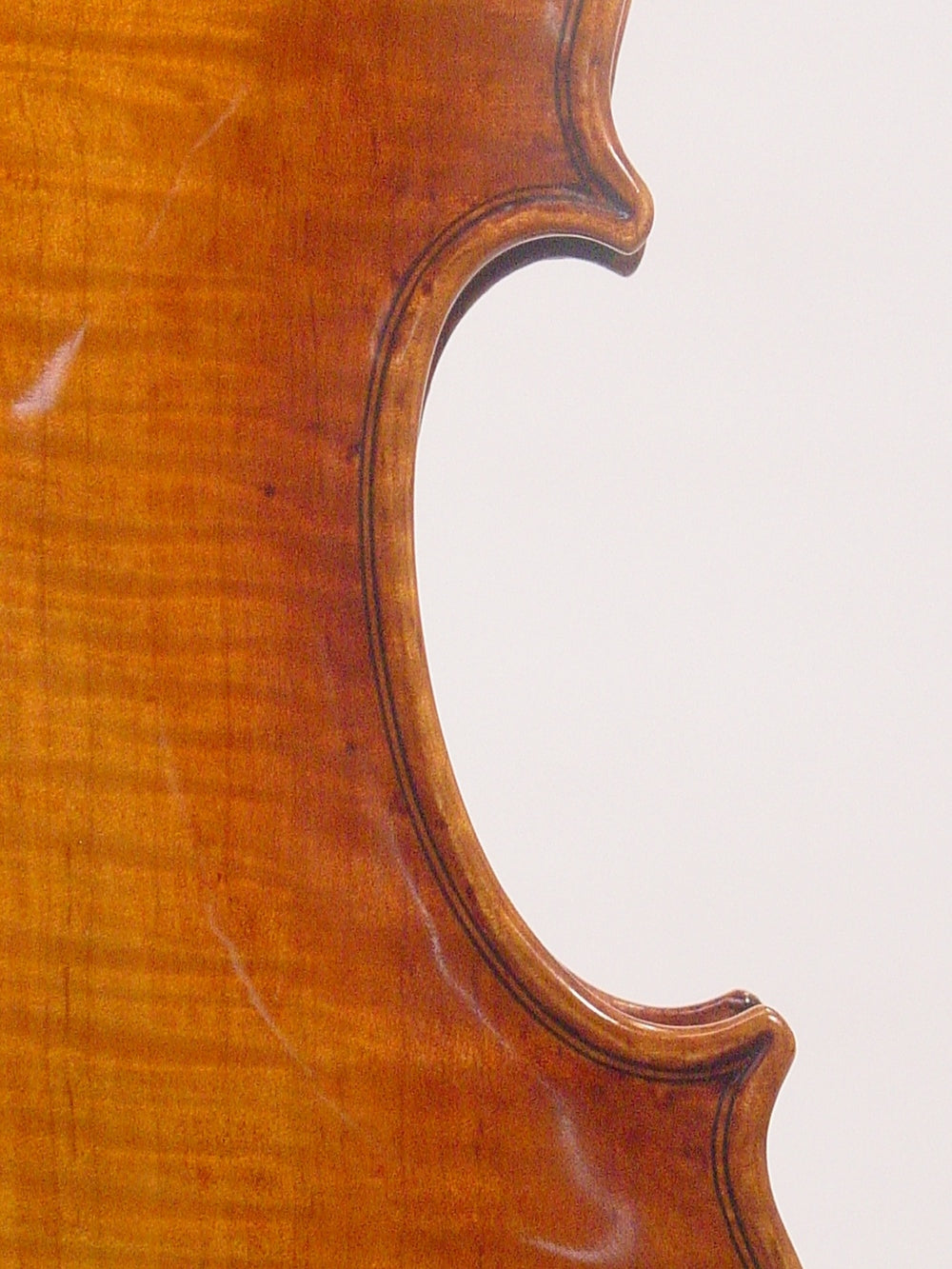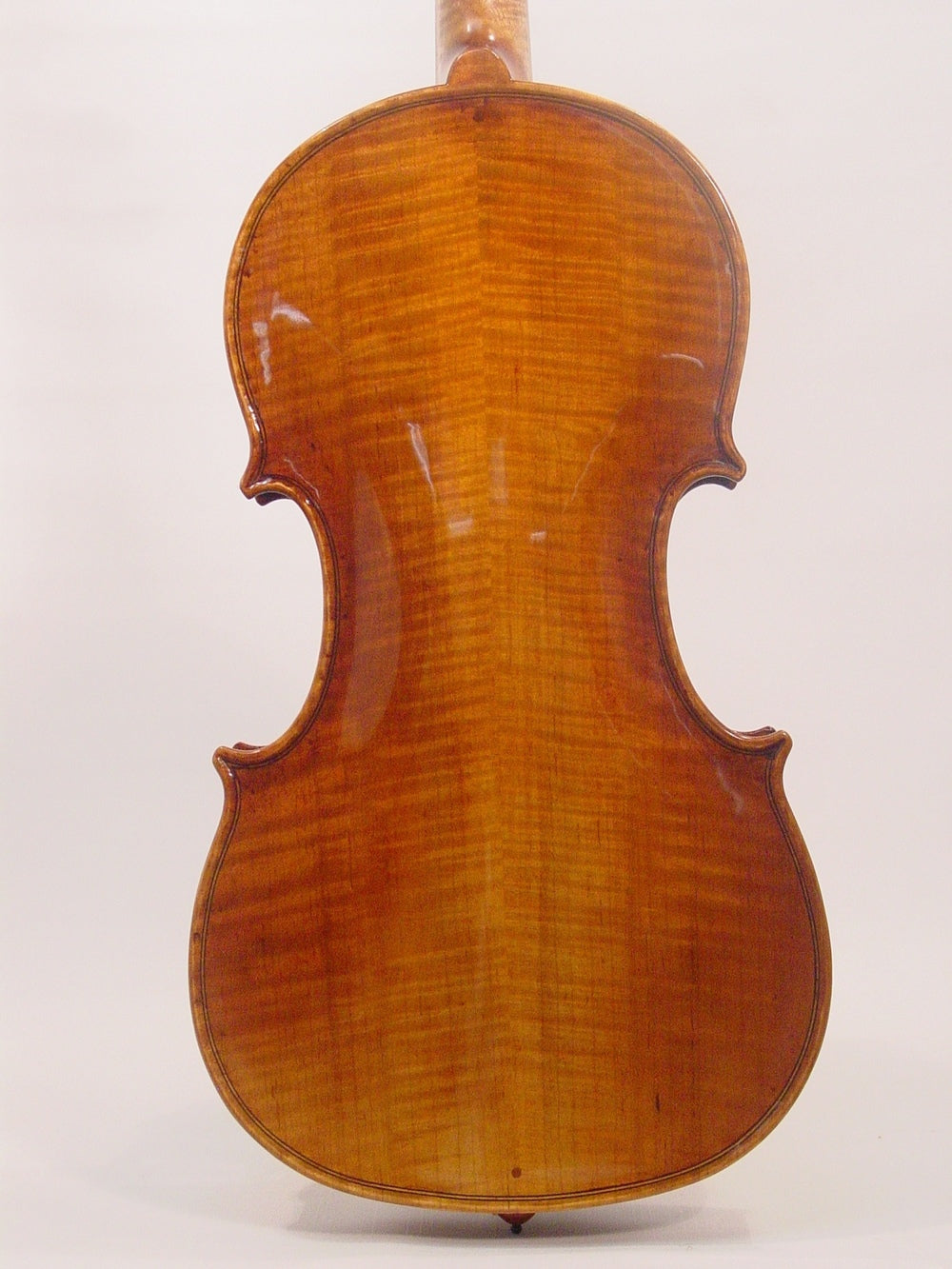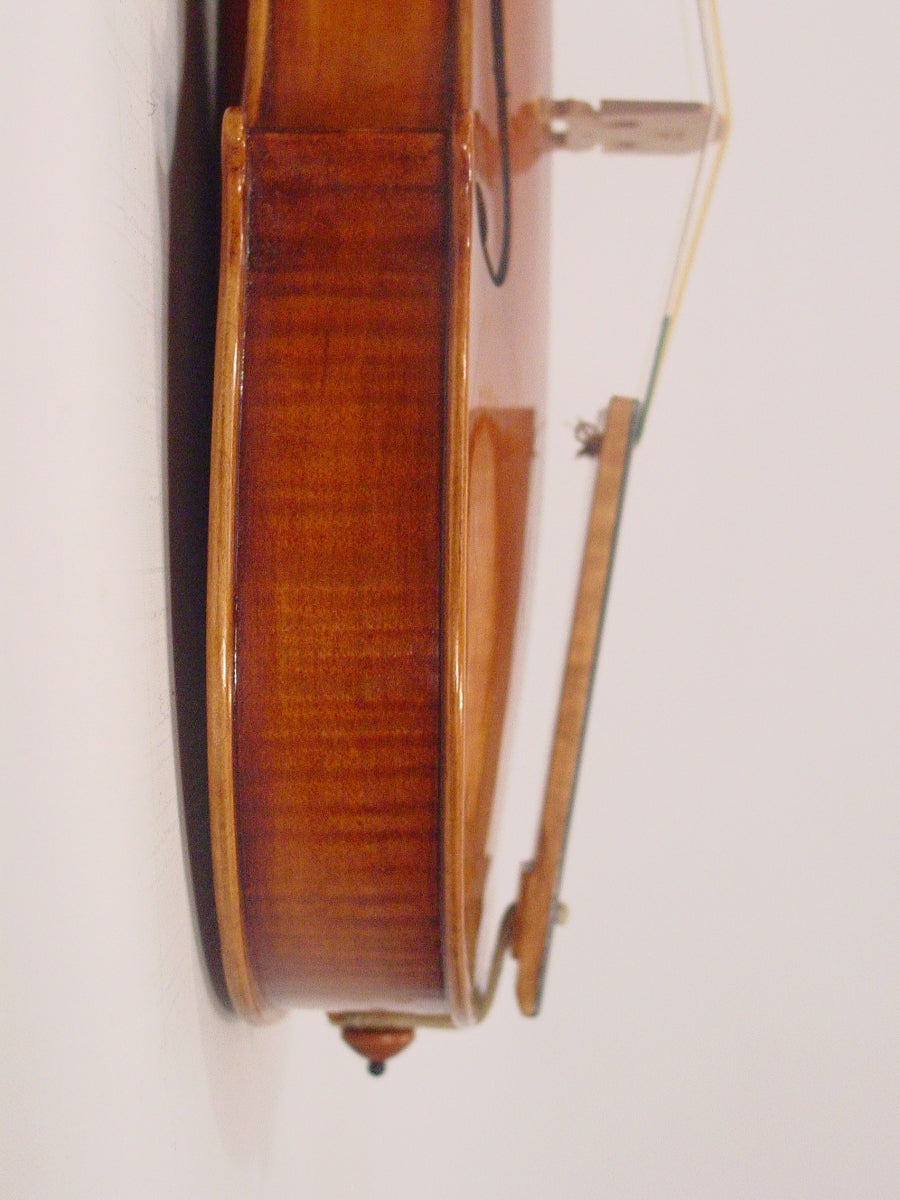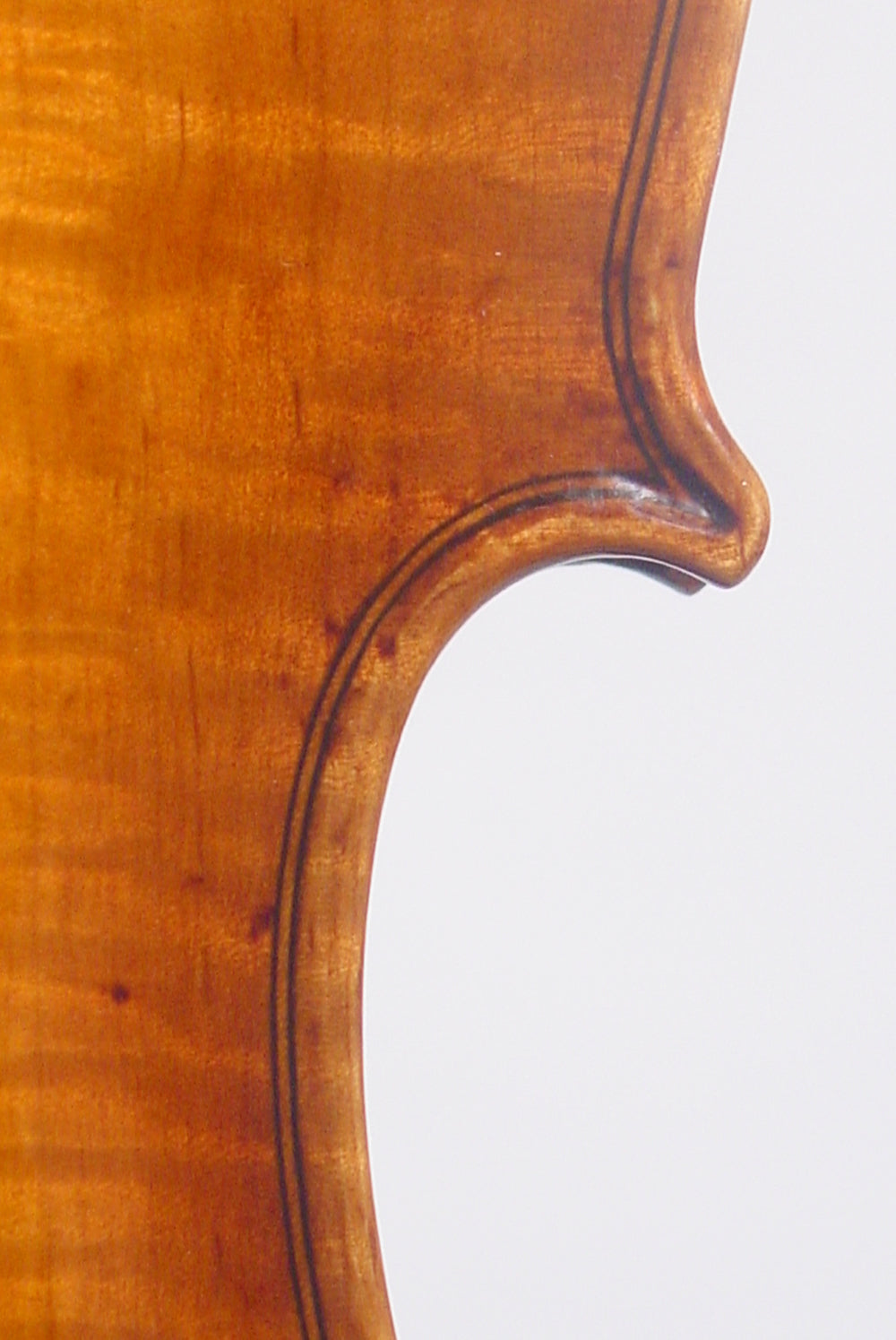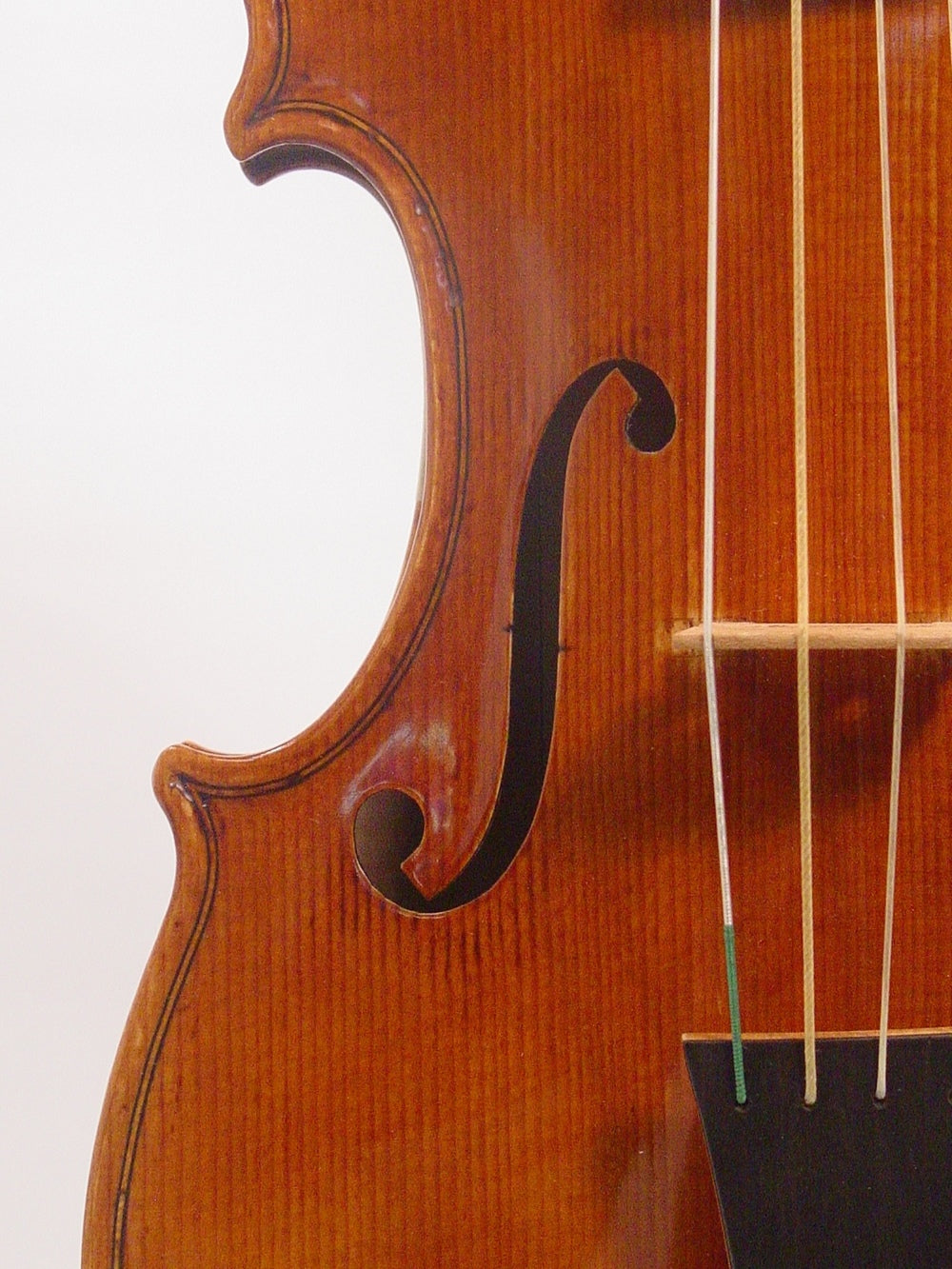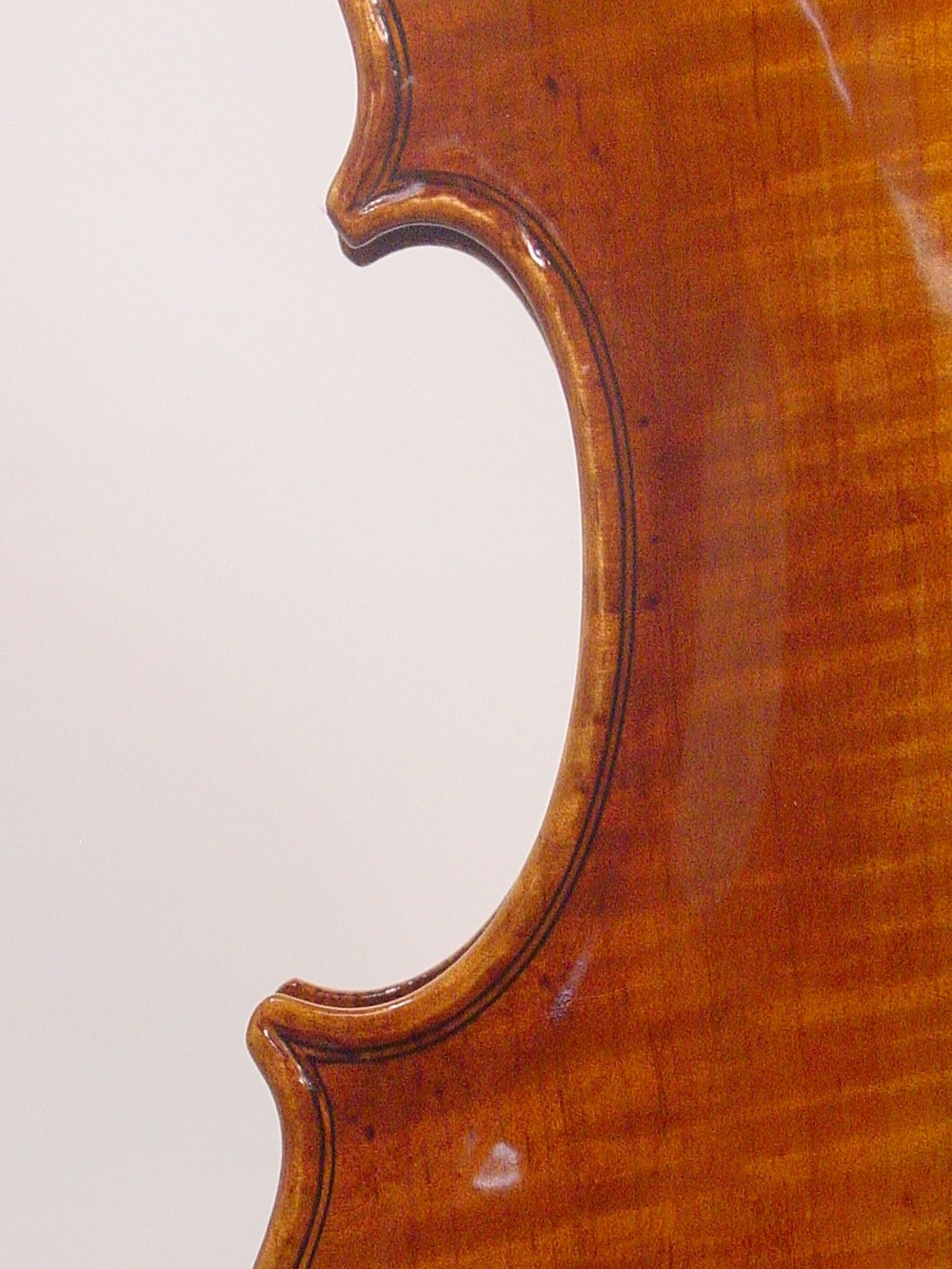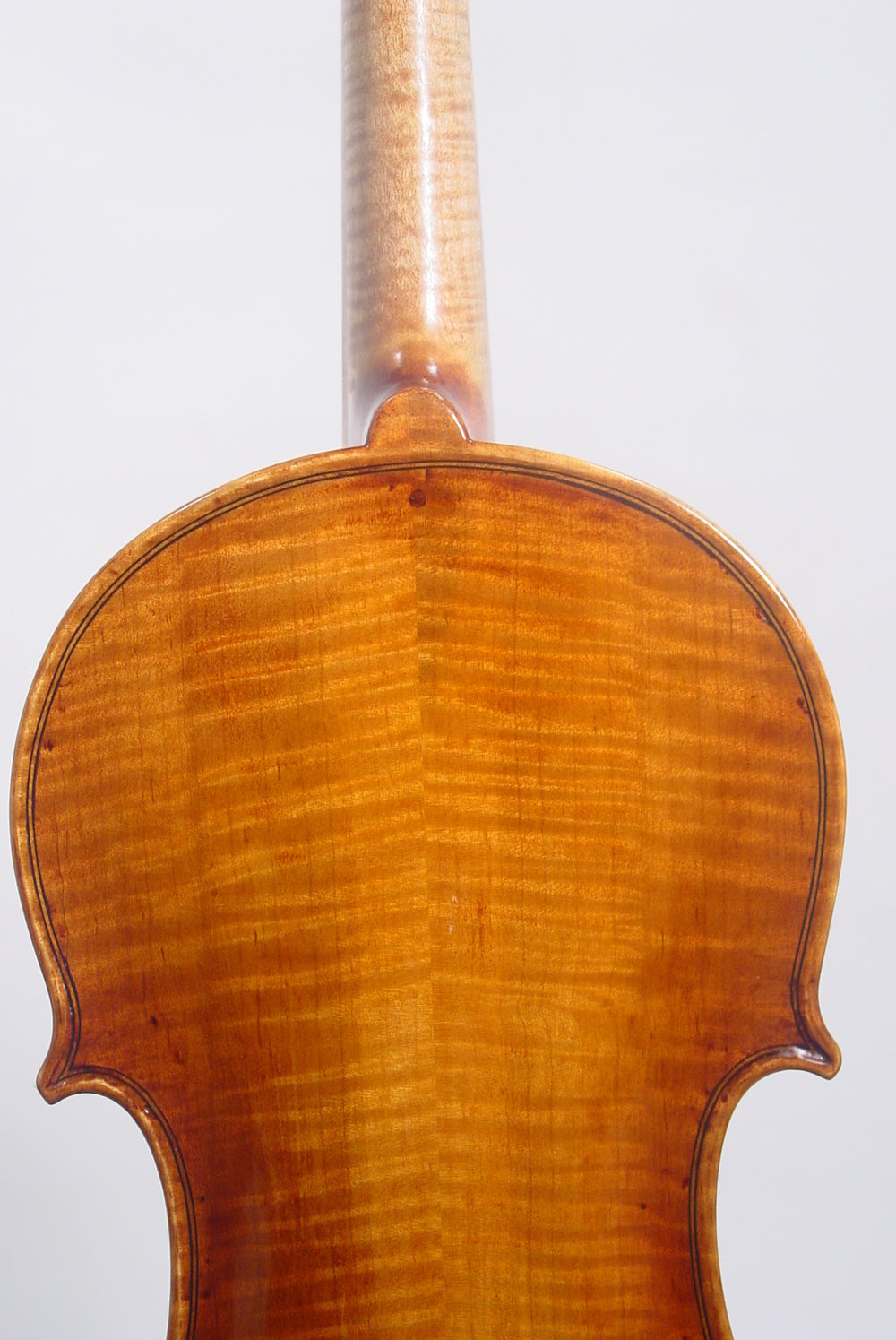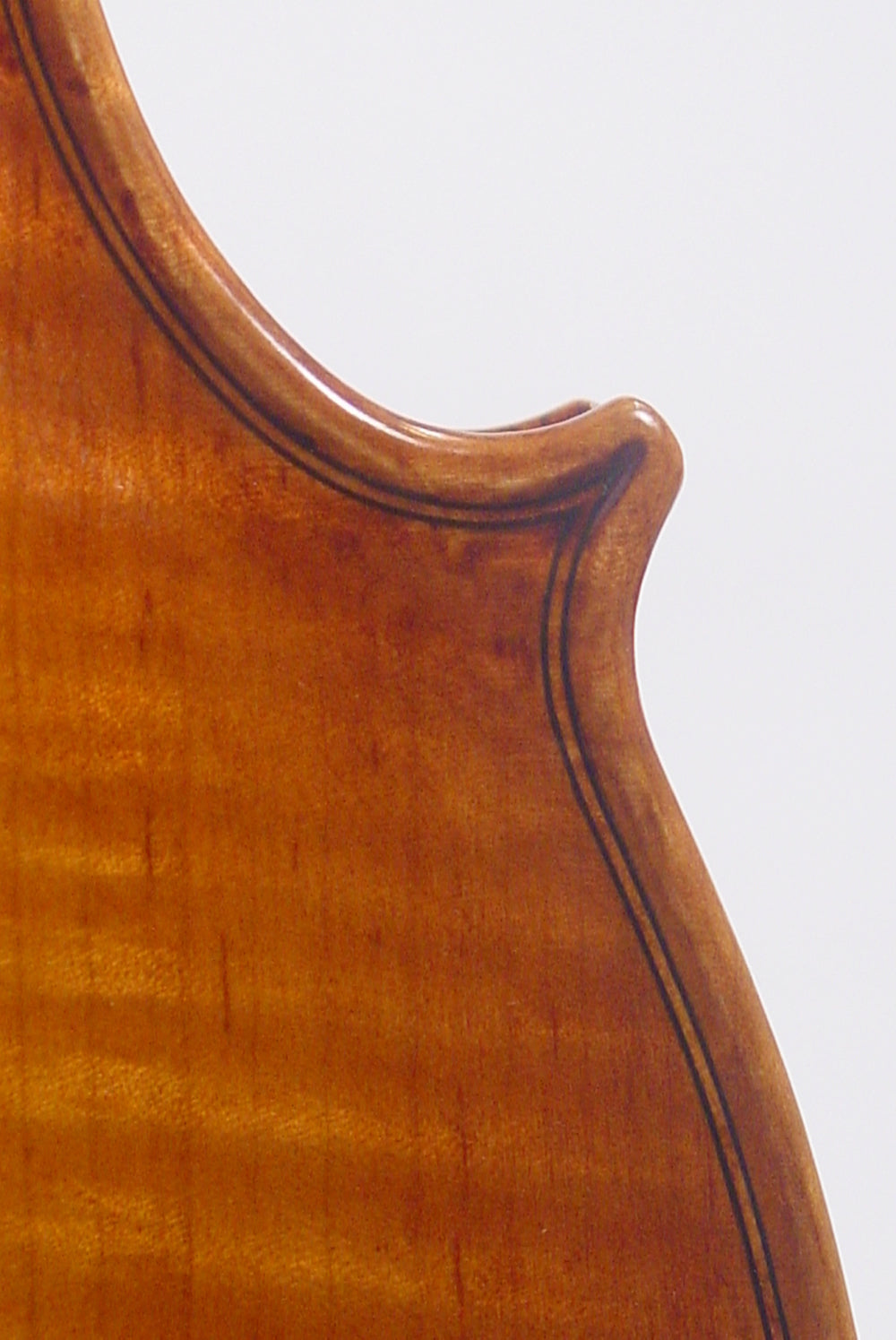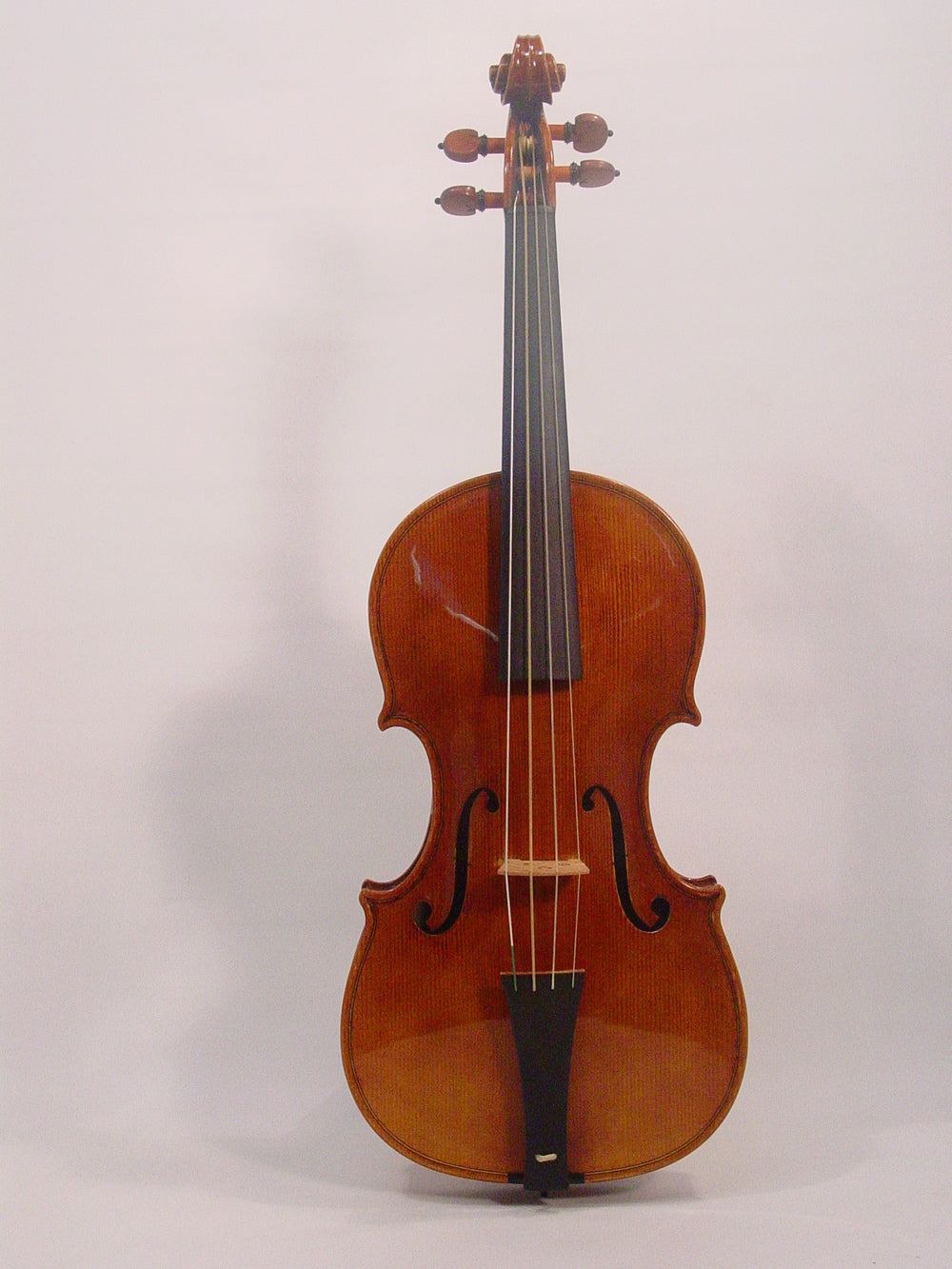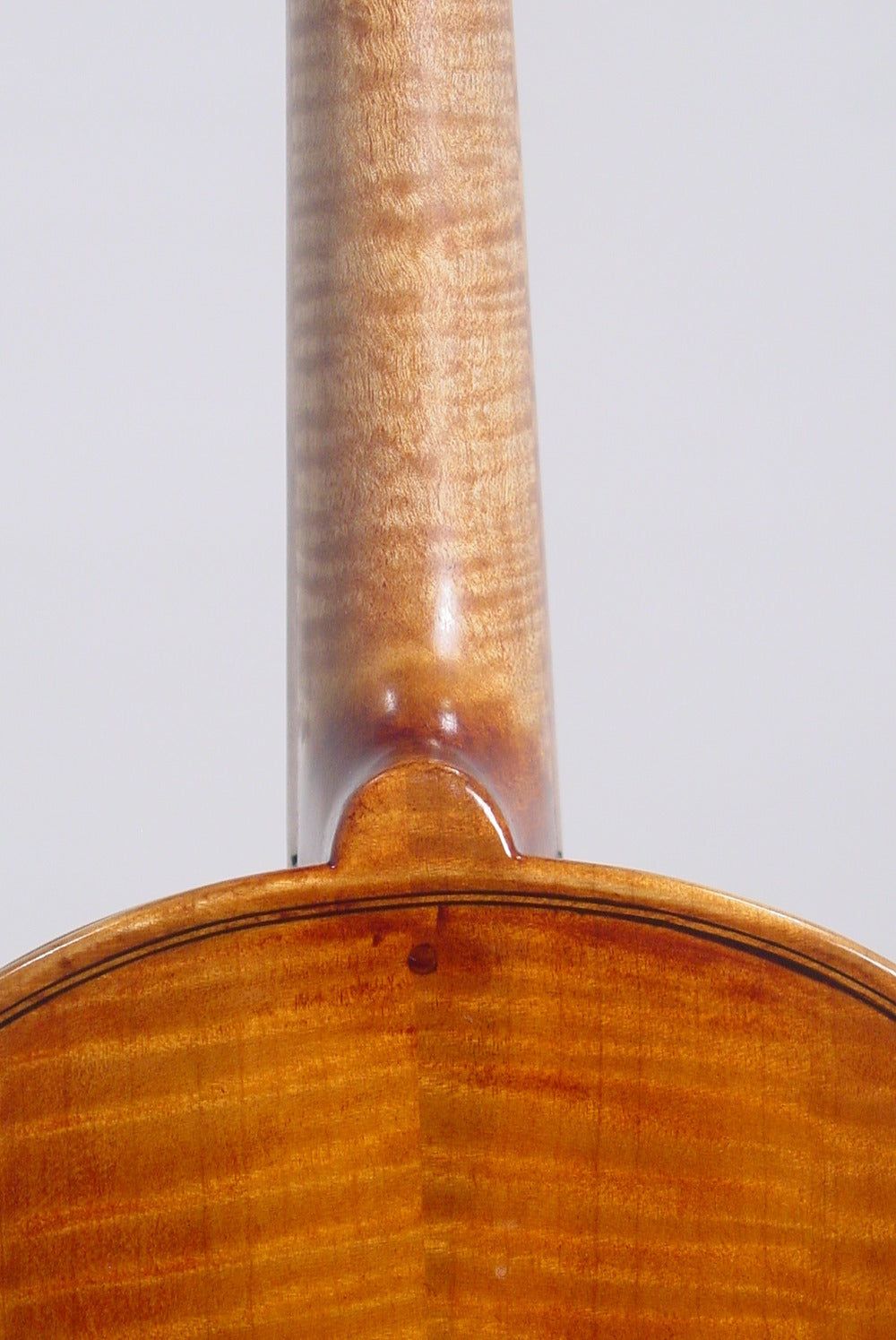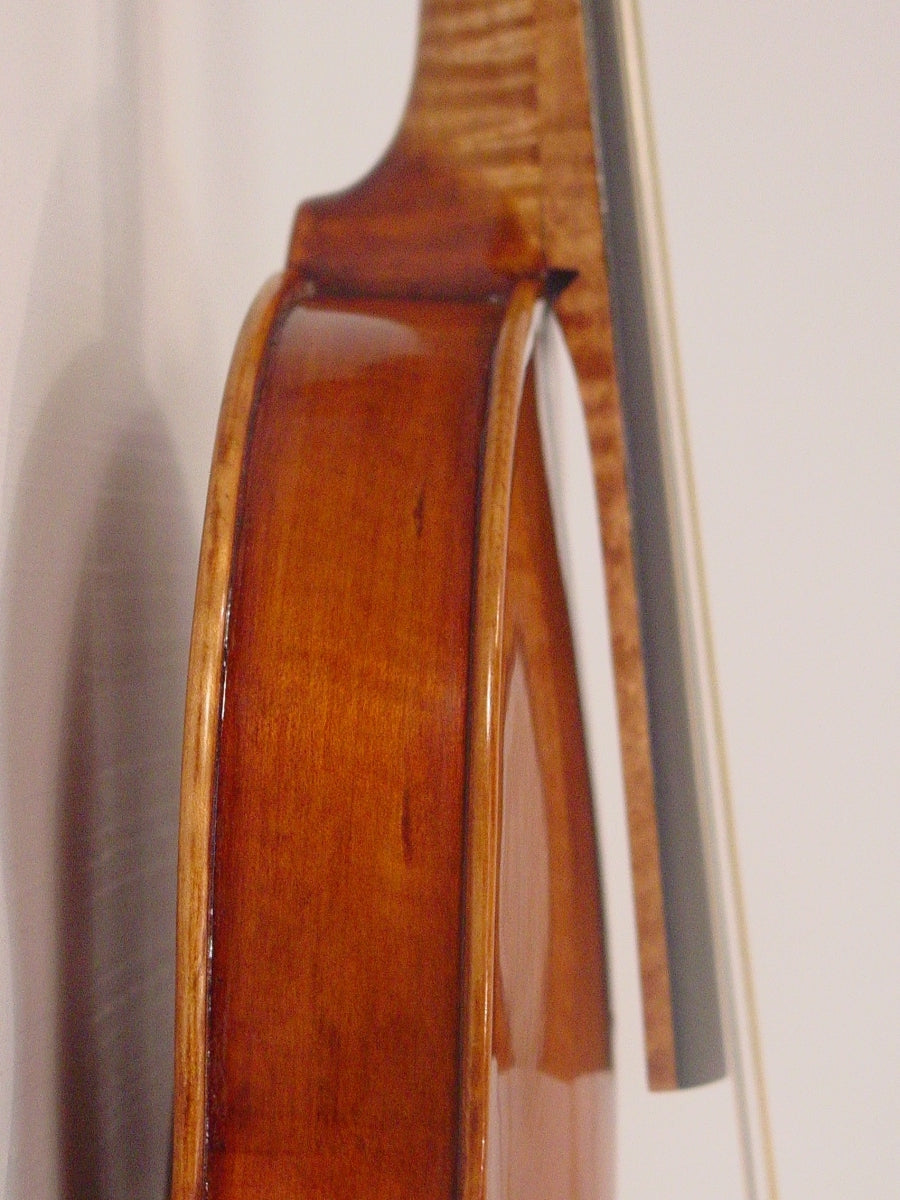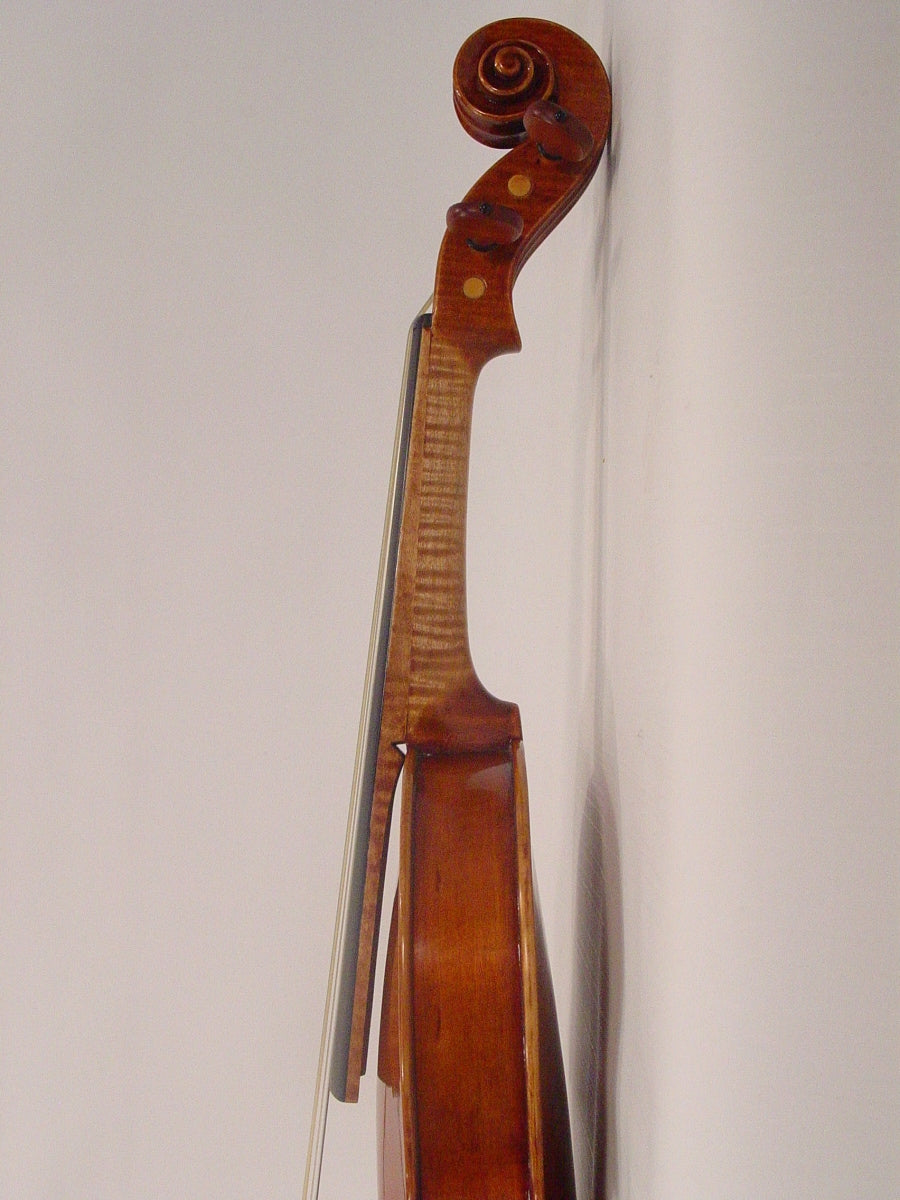Description
This instrument has been SOLD.
#
Bartolomeo Giuseppe “del Gesù” Guarneri made some of the most interesting and mysterious violins in the 18th century. His life and work has been the subject of myth and legend since his death in 1744. The instruments he left us are perhaps the most creative and artistic, certainly the most individual, of the Golden age of Cremonese violin making.
The instrument is made from fine materials with a Rubio ground sealer. The coloring is applied in layers of madder lake between the varnish coats. The varnish is made from dark Baltic amber.
The instrument I have chosen as a model here is an early example of del Gesù's work. The original instrument is known as the “Stretton” violin and was made in 1726 or 1729. It is a bold design resulting in a full, powerful tone.
Violin Setup:
There are no hard rules about neck angles and bridges for any particular time. Historically, there was a great deal of variety in neck angles, bridge, etc. I have identified and designed three typical stages of the violin setup leading up the the modern configuration. That is not to say that any one of these designs was necessarily limited to the time frame that I have given them. In some cases, earlier styles of setups may have persisted and been used in later times on some instruments. It may also be that a style I have identified here was developed earlier than the time I have given to it. These styles are only to serve as an aid to help you decide what type of setup you should have based on the period of music you will be playing.
 |
|
Renaissance Neck Angle and Bridge Shape |
 |
|
Early Baroque Neck Angle and Bridge Shape The Renaissance setup is typical for the 17th century (1620 - 1670) |
 |
|
Late Baroque Neck Angle and Bridge Shape The Renaissance setup is typical for late 17th, early 18th century (1670 - 1730) |
|

